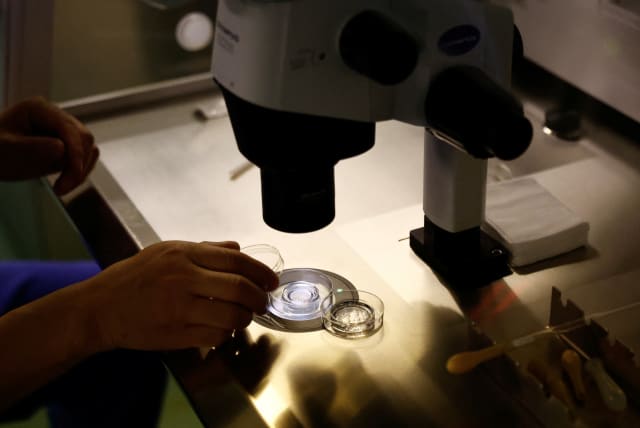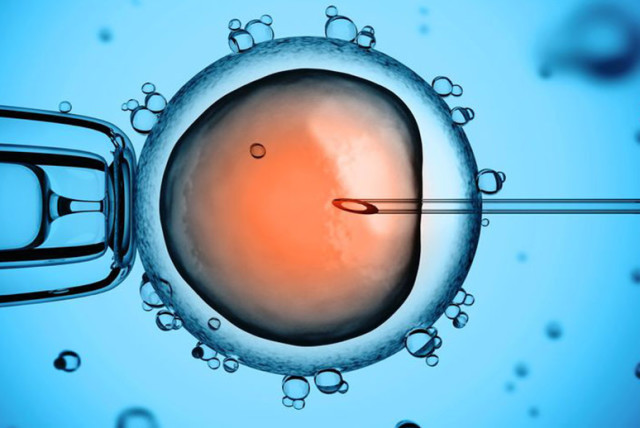The problems with preimplantation genetic diagnosis in Jewish law

This method is time-consuming and expensive, but it is also an incredible method to prevent conception with eggs that have evidence of genetic abnormality.
In the late 1980s, I had a classmate who had nine siblings. Four of them died in childhood from a horrific genetic disease. The experience took its toll on the whole family; the mother ultimately suffered from a severe mental health crisis.
The painful experience triggers a powerful question of whether couples carrying a genetic abnormality should try to have children naturally. This dilemma arises when both parents are known carriers of a recessive genetic disease (like Tay-Sachs) or when one parent is a carrier of a dominant genetic disease (like Marfan syndrome), in which a child can be ill even if he or she only inherits the abnormality from one parent.
As a general principle, Jewish law believes that couples should engage in procreation and not overly concern themselves with the unforeseeable fate of their children.
According to the Talmud, the prophet Isaiah chastised King Hezekiah for not having children because the latter had foreseen (correctly, as it turned out) that his child would be a sinner and evil ruler. “Why do you involve yourself with the secrets of God?” the prophet asked. “That which you have been commanded, the mitzvah of procreation, you are required to perform” (Brachot 10a).
However, when it comes to individual behavior, it’s always possible for a person to change his or her ways. The gates of repentance are never closed.
The suffering from terminal diseases, however, cannot be repaired. As such, Rabbi Shlomo Zalman Auerbach and Rabbi Yaakov Ariel assert that a person is not obligated to bear children who would likely suffer soon afterward from terminal diseases. We don’t fulfill mitzvot at the expense of causing unbearable pain to others (e.g., the young child) or when it will inevitably bring distress to oneself. Accordingly, the couple may be exempt from the commandment to procreate together and can use appropriate contraceptives to prevent pregnancy.
To avoid such scenarios, we encourage couples to undergo genetic testing before marriage or having children. Through this process, the Ashkenazi Jewish community, for example, has greatly reduced the occurrence of many diseases such as Tay-Sachs.
Preimplantation genetic diagnosis
In recent times, a new possibility has emerged to utilize preimplantation genetic diagnosis (PGD) during in vitro fertilization. This is an incredible process in which cells of an egg fertilized in the laboratory are extracted to check if its DNA contains desirable characteristics. If it does, the IVF procedure resumes and the egg is implanted in the mother with the hope that she will become pregnant and carry her child to birth.
This method is time-consuming and expensive, but it is also an incredible method to prevent conception with eggs that have evidence of the abnormality. As Rabbi Asher Weiss has noted, it’s difficult to contend that a couple is obligated to undergo such a trying process. The commandment to procreate only covers utilizing natural means. Even without the obligation, however, couples who choose this route fulfill a mitzvah by bringing children into the world.
One might argue that known genetic carriers of a disease may choose to conceive naturally and abort the fetus if in utero tests indicate that the fetus will likely become sick.
This approach, supported by Rabbi Dov Lior, has largely been rejected by halachic decisors such as Rabbi Shelomoh Dikhovski and Yitzchok Zilberstein, who contend that relying on the possibility of abortion is inappropriate, particularly in cases when the genetic anomaly would only be discovered later in the pregnancy.
Some decisors, like Rabbi Ariel, even contend that in cases in which the genetic anomaly is grave and very probable, one is obligated to only use this technique, PGD, which can prevent unnecessary suffering.
PGD CAN also be used to provide for the preference of DNA with desirable traits, such as gender and eye color.
Broadly speaking, Jewish decisors deem these non-therapeutic motivations as problematic for two reasons.
First, they contend that medical interventions should be done for the sake of healing. Non-therapeutic procedures are deemed as an inappropriate action on the body.
While this might be true, it has been noted that halachic decisors have permitted plastic surgery, even when it is done solely for the sake of aesthetics.
Second, in the case of PGD, ethicists also fear the social consequences of prioritizing certain physical attributes and the implications it might have for how we treat people. There is also a concern for slippery slope considerations and the potential use of PGD for nefarious purposes.
That said, on a case-by-case basis, some decisors allow PGD when it is deemed necessary on an emotional level or for someone’s mental health. For example, some struggle with having many children of only one gender. If having an additional child of a different gender may help a parent or the couple’s relationship, that might be a legitimate rationale.
In cases when the husband is a kohen (a member of the priestly line) and the sperm is donated from a non-kohen, a male descendant will not be considered a kohen. This will highlight to everyone that their child was born through technological means. To prevent this potential embarrassment, a few decisors have argued that we should allow PGD to produce a female child.
As noted, many disagree with these arguments. In their minds, it remains an imperative for us to utilize this powerful technology for therapeutic purposes alone. It’s a mitzvah to prevent illness, not to engineer desirable families. ■
The writer is the executive director of Ematai and author of Ethics of Our Fighters: A Jewish View on War & Morality.
Jerusalem Post Store
`; document.getElementById("linkPremium").innerHTML = cont; var divWithLink = document.getElementById("premium-link"); if (divWithLink !== null && divWithLink !== 'undefined') { divWithLink.style.border = "solid 1px #cb0f3e"; divWithLink.style.textAlign = "center"; divWithLink.style.marginBottom = "15px"; divWithLink.style.marginTop = "15px"; divWithLink.style.width = "100%"; divWithLink.style.backgroundColor = "#122952"; divWithLink.style.color = "#ffffff"; divWithLink.style.lineHeight = "1.5"; } } (function (v, i) { });

